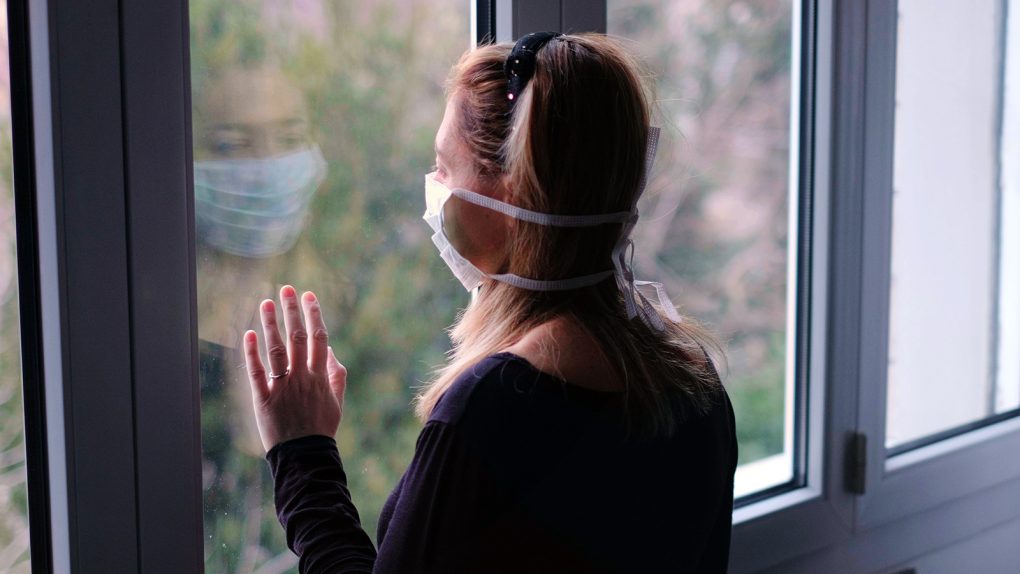- The CDC published a new coronavirus study that looked at the infection rate inside the household.
- Researchers found that 102 out of 191 people who came in contact with a sick person contracted COVID-19, with transmission likely occurring inside the home.
- 75% of the secondary household infections happened within 5 days, and researchers observed “substantial transmission” whether the first patient was a child or an adult.
The novel coronavirus spreads with ease in indoor settings. That’s why public health experts keep recommending the same measures that can reduce the risk of transmission, including face masks, social distancing, and frequent hand washing. More recently, officials have been recommending the ventilation of homes and other indoor spaces to reduce the risk of aerosol transmission. Reports said months ago that the most dangerous place for someone to be when it comes to coronavirus transmission is the home. It makes sense, of course, since people tend to feel safe and let their guard down. People are unlikely to wear masks at home, and social distancing isn’t always possible. If one person in a household is infected, others are likely to get COVID-19 as well. One of the reasons that favor infection is the fact that a person can be contagious before the onset of symptoms, which might warn others that transmission is possible.
The Centers for Disease Control and Prevention (CDC) published a new study showing that household COVID-19 transmission occurs rapidly, with secondary cases appearing even faster than expected.
Researchers from the Vanderbilt University Medical Center recruited households in Nashville, Tennessee and Marshfield, Wisconsin from April through September. Each household had one index patient, the first COVID-19 case in the home that was confirmed via a PCR test. The researchers then trained each household member remotely to complete symptom diaries and obtain self-collected samples every day for 14 days. In total, 101 index patients and 191 of their household contacts were included in the study.
The 191 contacts had no symptoms on the day the illness was confirmed for the respective index patient. But 102 people out of the 191 eventually tested positive for SARS-CoV-2 during follow-ups. Dr. Keipp Talbot, who led the Vanderbilt study, told NewsChannel5 Nashville that “what we found is COVID spreads very rapidly and very quickly inside a home.”
He continued, “Once it’s in your house, it’s very hard to keep from spreading, and you don’t know who in your home will be susceptible, and they’ll need to be hospitalized.”
The CDC study might offer the best indication so far of the severity of household transmission. The figures indicate that 53% of contacts got COVID-19. That’s much higher than the 20% to 40% infection rate for the home that was determined in related research.
In 14 households, the index patient was younger than 18 years. Secondary infection from index children younger than 12 years old was 53%, and is was 38% from index children ages 12 to 17. The findings indicate that young children and teenagers can infect other members of the family just like adults.
The study also says that 75% of the secondary infections were identified within 5 days of the index patient’s onset of symptoms, and “substantial transmission occurred whether the index patient was an adult or a child.”
“Because household transmission of SARS-CoV-2 is common and can occur rapidly after the index patient’s illness onset, persons should self-isolate immediately at the onset of COVID-like symptoms, at the time of testing as a result of a high-risk exposure, or at the time of a positive test result, whichever comes first,” the researchers wrote. “Concurrent to isolation, all members of the household should wear a mask when in shared spaces in the household.”
The study offers additional advice to households dealing with at least one COVID-19 infection. The researchers advise isolation inside the home whenever possible and avoiding contact with the outside world. Everyone in the home should quarantine to prevent the spread of the illness to others. The use of face masks at home is also advised in these scenarios.
Because prompt isolation of persons with COVID-19 can reduce household transmission, persons who suspect that they might have COVID-19 should isolate, stay at home, and use a separate bedroom and bathroom if feasible. Isolation should begin before seeking testing and before test results become available because delaying isolation until confirmation of infection could miss an opportunity to reduce transmission to others. Concurrently, all household members, including the index patient, should start wearing a mask in the home, particularly in shared spaces where appropriate distancing is not possible. Close household contacts of the index patient should also self-quarantine, to the extent possible, particularly staying away from those at higher risk of getting severe COVID-19.
The researchers also note that communities should employ “frequent and systematic testing” to reduce and prevent COVID-19 transmission by finding cases before the onset of symptoms.
This new study underscores the importance of social distancing. “If you or anyone in the family goes outside the bubble and does anything that’s risky — large groups, bars, not wearing your mask — they can come back into that bubble and put everyone in that bubble at risk,” Talbot said








